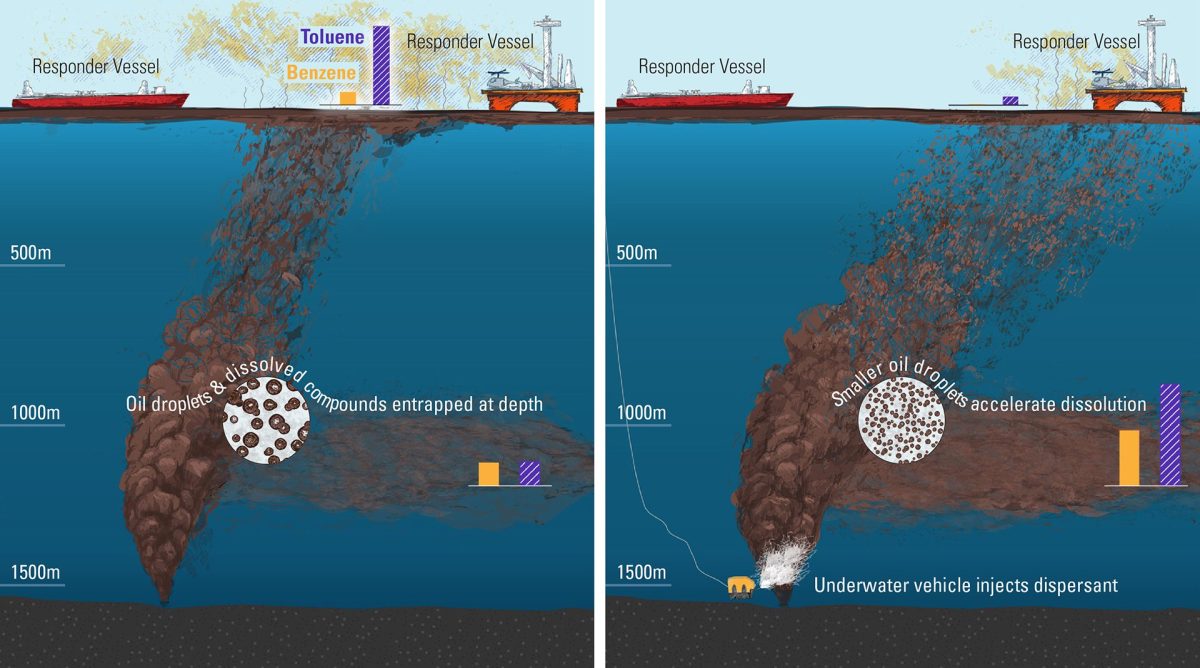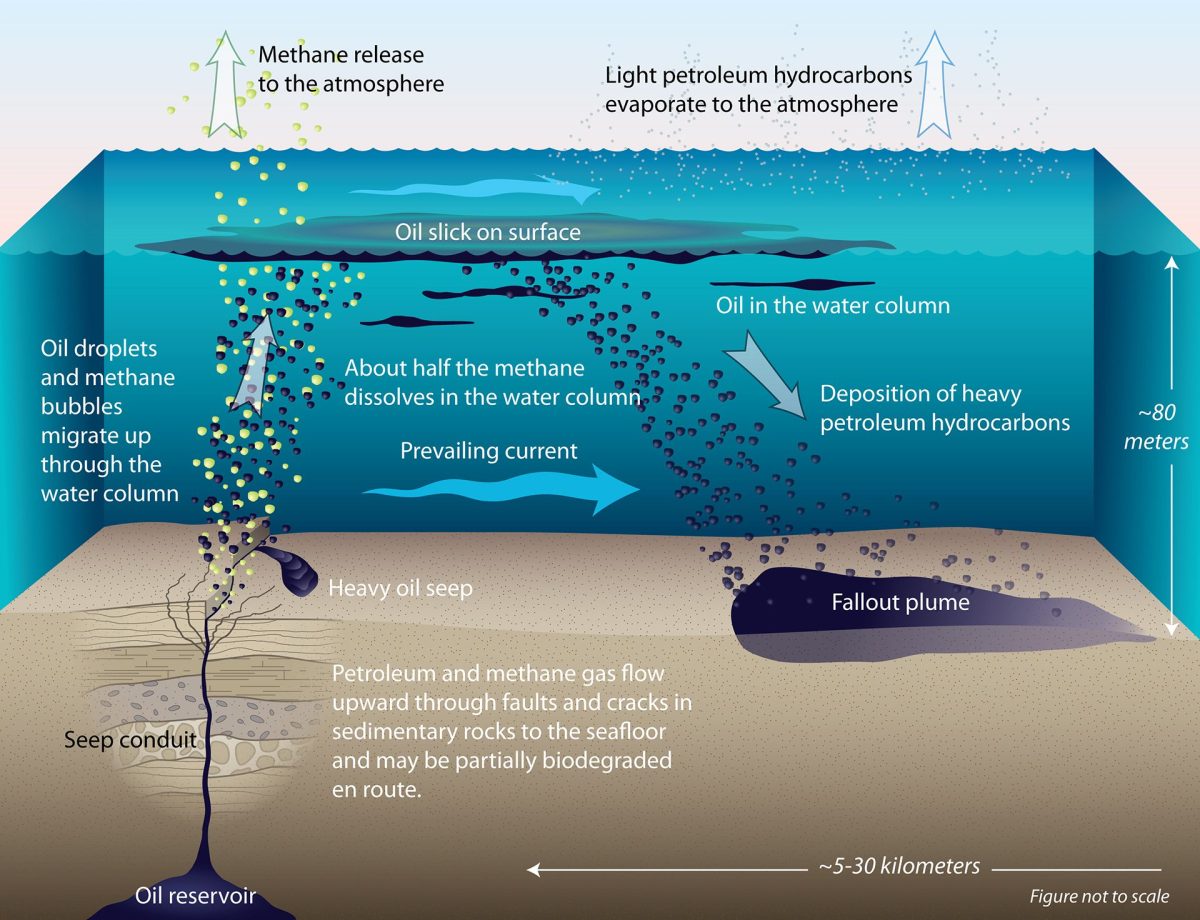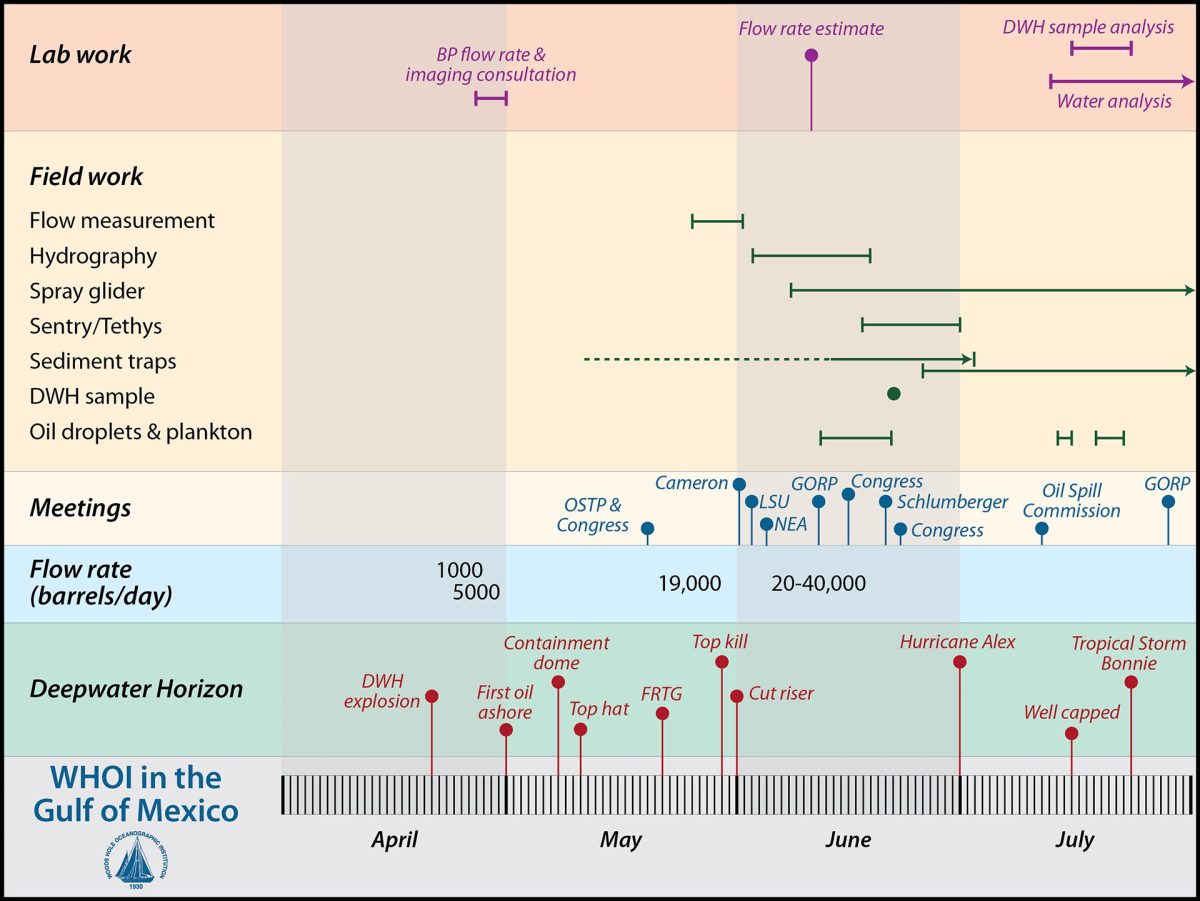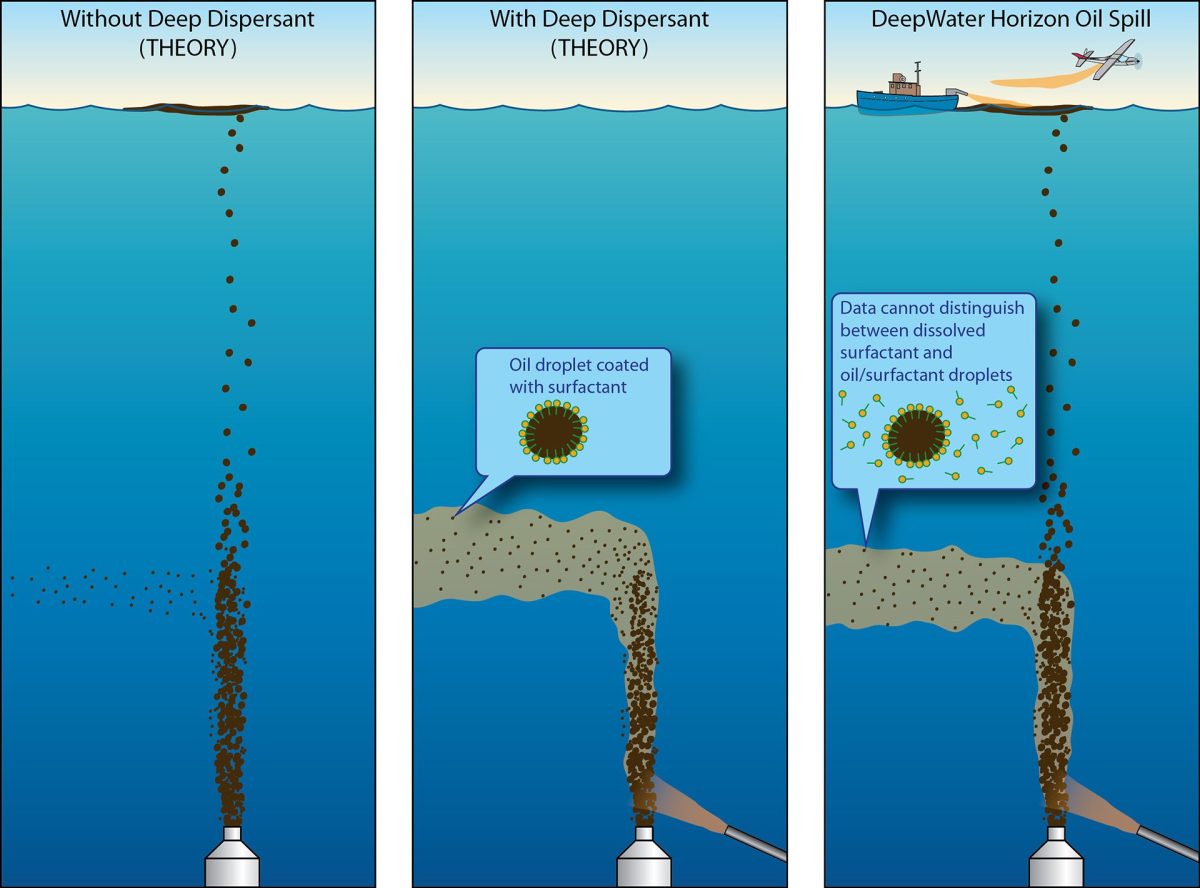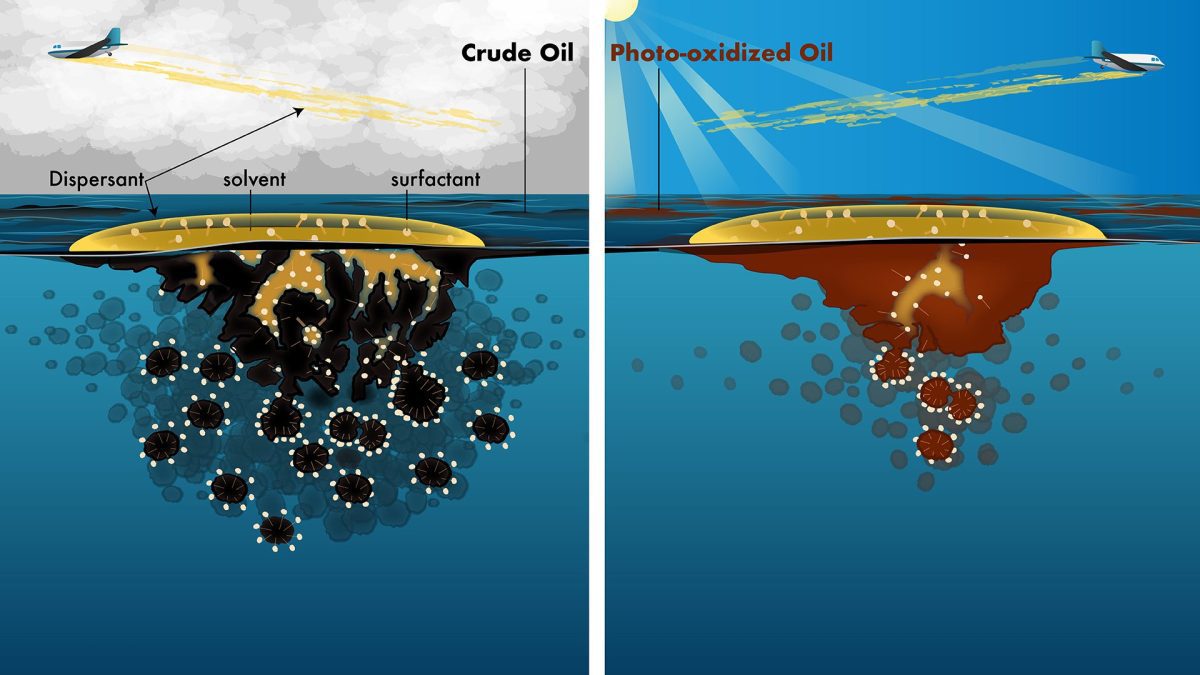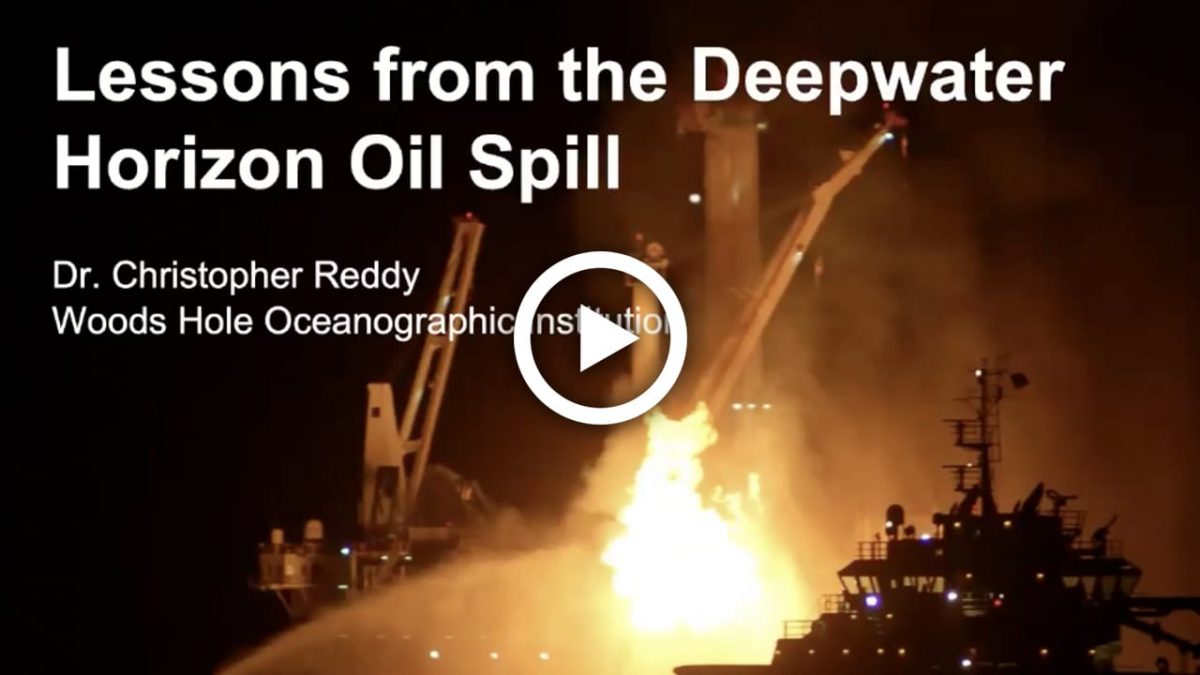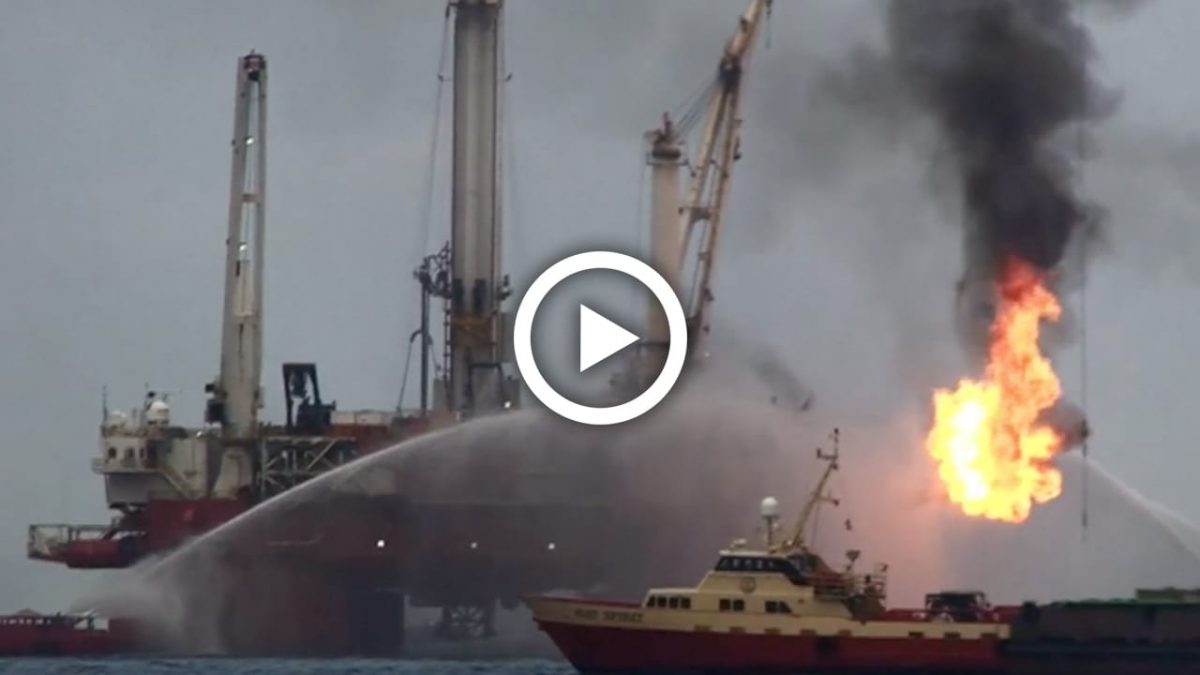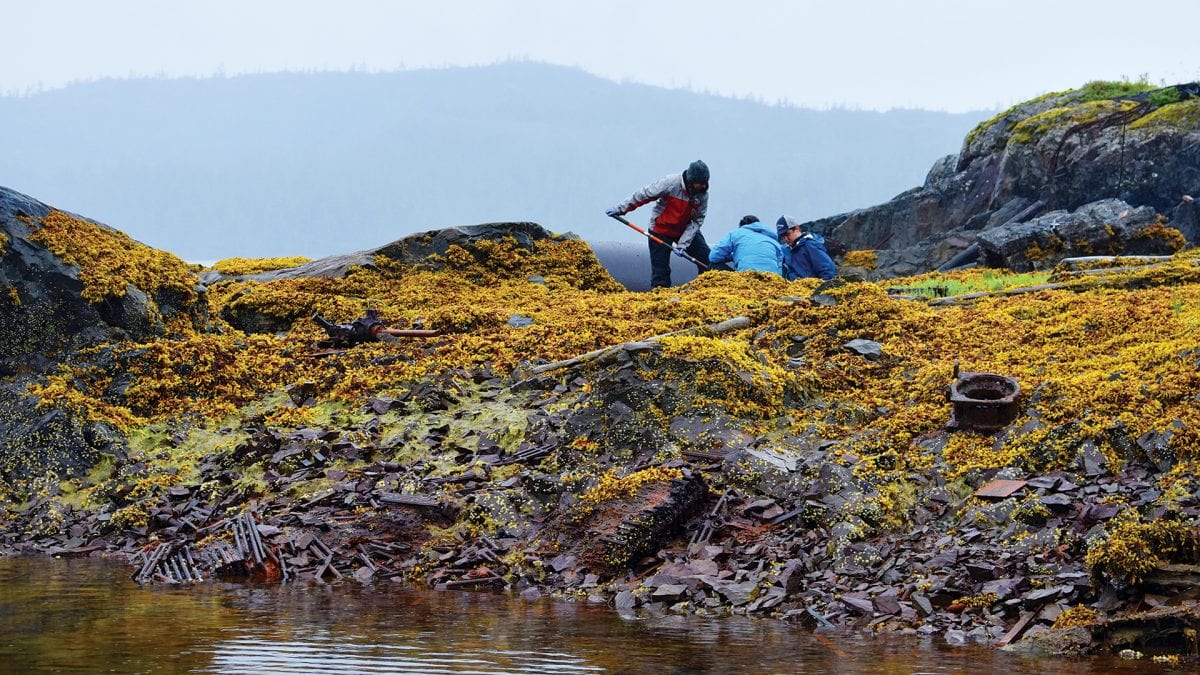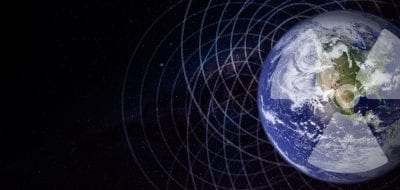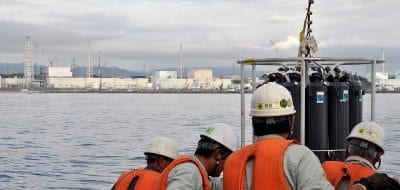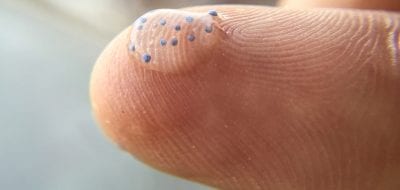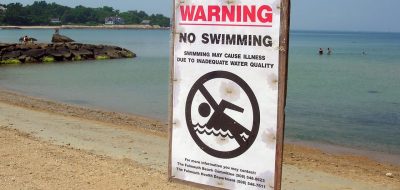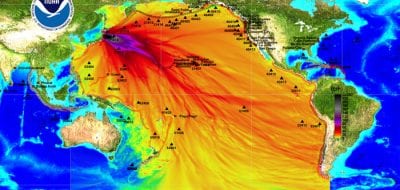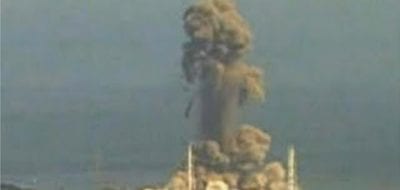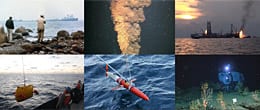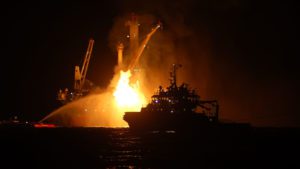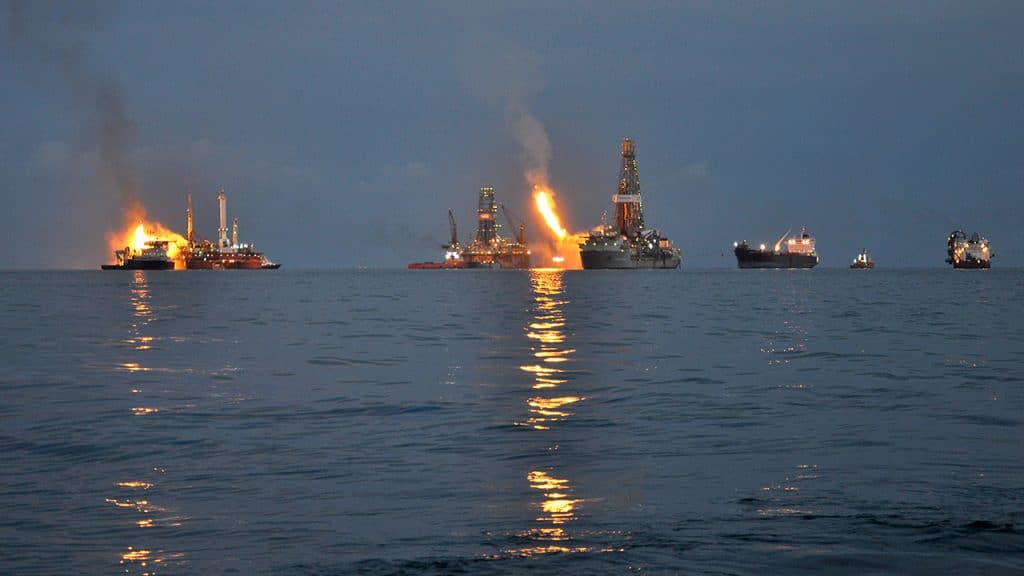
Deep Water Horizon. (Cabell Davis, Woods Hole Oceanographic Institution)
What is an oil spill?
Millions of years ago, sediment buried dead plants and animals. After that, high pressure and temperature conditions caused them to decay into a liquid form — oil — below ground. Today we tap into these oil pockets to generate power and fuel global transportation. Although oil originated with living organisms, its current form causes harm when it spills into the environment. To complicate matters, oil is a complex cocktail of tens to hundreds of thousands of compounds that behave in different ways when they interact with the ocean environment.
Oil spills happen regularly. Most are small, but some can be massive, releasing millions of gallons of oil into the ocean. When spills happen — whether they are near the coastline or offshore — wind, waves, and currents can carry the oil to shore, where it contaminates everything it touches.
What causes these types of spills?
The majority of oil spills, such as those that occur while refueling ships, are too small to garner much public attention. Larger spills occur when tankers collide or run aground on reefs and begin to leak their contents into the water. For example, a grounding event caused the Exxon Valdez spill off the coast of Alaska in 1989, releasing 11 million gallons of oil to the Gulf of Alaska. The largest spill in U.S. history, Deepwater Horizon in 2010, occurred when an offshore oil rig exploded and later collapsed. The damaged well ultimately spewed 134 million gallons of oil and gas into the Gulf of Mexico — the equivalent of more than 200 Olympic-sized swimming pools.
What kind of impact do oil spills have?
The most obvious impact on the environment is when large animals become oiled. As birds, sea turtles, and marine mammals swim through the oil slick, their bodies become coated. That oil prevents birds and mammals from staying warm, and as they are exposed to cold temperatures, they can easily die.
Another impact is when smaller organisms are coated in or ingest oil. Both methods of exposure can cause illness, behavioral changes, and even death due to a variety of toxic chemicals. Some of the smallest organisms may experience the highest mortality rates. For instance, plankton includes tiny, free-floating larvae of many organisms, from corals to mollusks to crabs. When plankton is exposed to oil during the larval stage, this can lead to physical and behavioral abnormalities that later affect adult populations.
On the human side, oil spills have extremely harmful impacts on public health. People can be exposed to toxic chemicals when they visit a contaminated beach, consume contaminated seafood, or inhale airborne chemicals released by a nearby spill. Common symptoms include dizziness, headaches, nausea, vomiting, and fatigue. Over time, people may experience immune system, endocrine, or cardiovascular problems or develop cancer.
Mental health also suffers. As oil spills damage property and people lose jobs, stress levels increase, along with anxiety, depression, and thoughts of suicide. Rates of domestic violence increase. Communities may experience loss of local industries, particularly fisheries, recreational fishing, and tourism. In extreme cases, entire communities may need to relocate.
How can we detect and respond to oil spills?
A variety of remote sensing (plane and satellite) techniques can detect and track oil spills. Remote sensing instruments detect variations in the ocean’s surface to identify areas with oil and those without. Once an instrument detects a spill, it must be contained quickly, particularly if it occurs near sensitive marine ecosystems, such as coral reefs, estuaries, seagrass meadows, and mangrove forests. Because low tide brings oil slicks in contact with organisms in shallow areas, emergency responders often attempt to prevent oil from reaching shore and near-shore areas. However, doing so requires fighting against wind and wave actions that carry oil onto land.
Response teams can corral slicks using booms to prevent the oil from reaching sensitive areas. Once it is contained, skimmers remove the oil from the water’s surface. When large quantities of oil contaminate the ocean, as happened with the Deepwater Horizon event, burning may be in order. Response teams use fire-proof booms to gather the oil before lighting it on fire to prevent its spread. They can also burn oil that has reached land to help vegetation recover more quickly.
Over time, naturally occurring microbial communities break down the oil in the ocean in a process called bioremediation. Under the right conditions, dispersants can help break a larger oil slick into smaller droplets. This increases the surface area of the oil, providing microbes with greater access to the rich source of carbon contained within. Once oil has reached shore, responders use surface washing agents, such as dishwashing soap, to remove it from surfaces.
How do scientists study oil spill events?
Scientists track and model oil spills to enhance response time and decrease damage to the ocean ecosystem. Additionally, toxicologists are investigating the health effects of exposure to oil. Most studies of oil spills have focused on individual species, but some researchers are beginning to examine the ecosystem-wide effects of these disasters.
Asif, Z. et al. Environmental impacts and challenges associated with oil spills on shorelines. Journal of Marine Science and Engineering. Vol. 10. May 31, 2022. doi: 10.3390/jmse10060762
Hu, C. et al. Optical remote sensing of oil spills in the ocean: What is really possible? Journal of Remote Sensing. Vol. 2021. February 13, 2021. doi: 10.34133/2021/9141902
Michel, J. Oil Spill Task Force. Surface Washing Agents. https://oilspilltaskforce.org/wp-content/uploads/2015/08/SurfaceWashingAgents.pdf
National Academies of Sciences, Engineering, and Medicine. Oil in the Sea IV: Inputs, Fates, and Effects. 2022. https://nap.nationalacademies.org/catalog/26410/oil-in-the-sea-iv-inputs-fates-and-effects
NOAA. What happened during the Deepwater Horizon oil spill? https://oceanservice.noaa.gov/education/tutorial-coastal/oil-spills/os04-sub-01.html
NOAA Office of Response and Restoration. How Do Oil Spills out at Sea Typically Get Cleaned Up? https://response.restoration.noaa.gov/about/media/how-do-oil-spills-out-sea-typically-get-cleaned.html
Soares, M.O. & E.F. Rabelo. Severe ecological impacts caused by one of the worst orphan oil spills worldwide. Marine Environmental Research. Vol. 187. March 7, 2023. doi: 10.1013/j.marenvres.2023.105936
Ward, C. The sun’s overlooked impact on oil spills. Oceanus. December 19, 2018. https://www.whoi.edu/oceanus/feature/the-suns-overlooked-impact-on-oil-spills/
Ward, C., personal communication.


